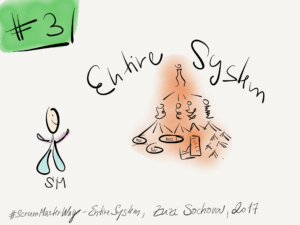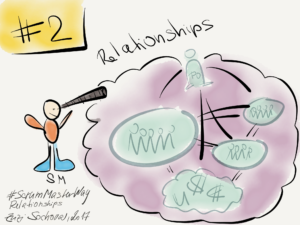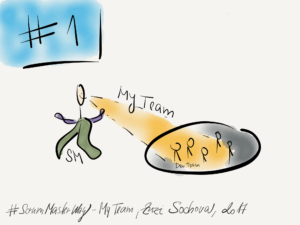Culture is intangible. It’s hard to touch. Hard to define, hard to measure. However, it is the critical piece for the organizational success. We may debate if culture follows an organizational structure or vice versa, but I don’t think it is important. Culture reflects our values and philosophy. The way we are. Being Agile is about changing mindset. If enough people change their mindset, the culture changes and they become Agile Organization. Simple if you say it this way, but hard to do.
I’ve been looking for a good definition of culture for years. I surprisingly find it at CAL (Certified Agile Leadership) training which I attend from Michael Sahota in California. I very much like his way of describing culture, and I used it as an inspiration for my drawing.
 The culture consists of two parts. The mindset and structure. I’ve always seen the mindset as the most important part of culture, a driving force. Something which can change the structure part if done well. To my belief structure is always preventing us from change, from being successful. So shall we change the structure or mindset? I would always go for the mindset. It’s harder, but it brings significantly better results. Create a clear goal. Purpose. Something which makes to you stand up every morning and put energy into it. Something you truly believe in and are willing to take ownership and responsibility for. Something which makes you collaborate with others, something which makes your day. When you succeed with the mindset, you are usually ready to change the structure. So I truly believe that structure follows mindset. Which is good, because as the first step you can start with changing yourself. 🙂
The culture consists of two parts. The mindset and structure. I’ve always seen the mindset as the most important part of culture, a driving force. Something which can change the structure part if done well. To my belief structure is always preventing us from change, from being successful. So shall we change the structure or mindset? I would always go for the mindset. It’s harder, but it brings significantly better results. Create a clear goal. Purpose. Something which makes to you stand up every morning and put energy into it. Something you truly believe in and are willing to take ownership and responsibility for. Something which makes you collaborate with others, something which makes your day. When you succeed with the mindset, you are usually ready to change the structure. So I truly believe that structure follows mindset. Which is good, because as the first step you can start with changing yourself. 🙂




 I travel & speak at
I travel & speak at